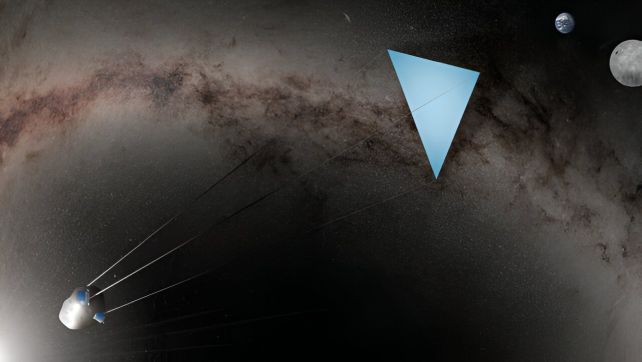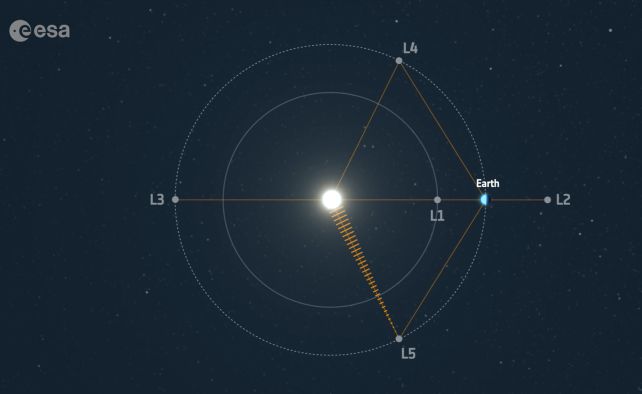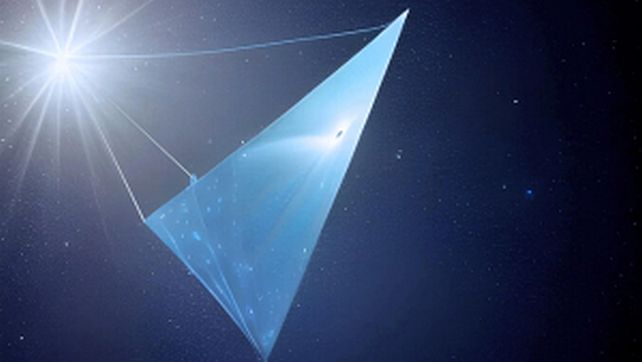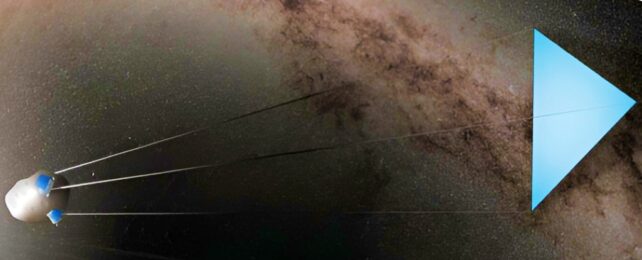Mitigating climate change on Earth is such a dire challenge that scientists are seriously investigating every single option they can think of.
The latest idea is wild… but it's not outside the realm of possibility. Astronomer István Szapudi, of the University of Hawaiʻi Institute for Astronomy, reckons we could catch an asteroid, park it in front of Earth, and tether a parasol to it, to block some of the Sun's light.
The solar shield isn't a new idea. But Szapudi's alterations would greatly reduce the cost and difficulty of implementation, bringing it a step closer to achievable.
"In Hawaiʻi, many use an umbrella to block the sunlight as they walk about during the day," he explains. "I was thinking, could we do the same for Earth and thereby mitigate the impending catastrophe of climate change?"

The idea of a solar shield isn't without merit. If it blocked just a small percentage of the sunlight constantly irradiating Earth, it could be sufficient to counteract rising temperatures; not, perhaps, an absolute solution, but a stop-gap that would give us a bit of time to work on things here on the surface.
The problem is that the sail would need a fair amount of mass as ballast to prevent it from being blown away by the solar wind and radiation pressure, and for gravitational stability – and getting that much mass into space would be difficult and expensive.
What, however, if the mass is already out there? This is where capturing an asteroid and tying a parasol to it emerges.
Szapudi calculated that placing a counterbalance towards the Sun in the L1 Lagrangian would reduce the total mass of the shield and counterweight to just 3.5 million tons.

The L1 Lagrangian is a point of relative gravitational stability generated by the interaction between Earth and the Sun. The gravitational pulls of the two bodies balance out in these Lagrange points to minimize the amount of adjustment needed to stay in that spot.
Each two-body system has five Lagrangians; L1 is directly between Earth and the Sun, the perfect spot to park a solar shield.
That 3.5 million tons might sound like a lot of mass, but it is about 100 times less mass than previous estimates for an untethered shield. And only 1 percent of that would be the actual shield, around 35,000 tons. The remaining mass would be the asteroid.
It would be possible to lower the weight of the shield even further, with lighter materials such as graphene. It would still be pretty tricky to accomplish – current rocket maximum payloads are nowhere near 35,000 tons.
The current record-holder is Saturn V, which launched a payload of 140 tons into low-Earth orbit during the Apollo era. The behemoth SpaceX rocket Starship is currently at the edge of human engineering. Even it has a top capacity of just 250 metric tons.

Nevertheless, the idea could be more achievable than previously thought. NASA has shown that we can redirect an asteroid. A lot more work would need to be done, but Szapudi thinks that if we start working on research and development now, we may be able to implement it before it's too late for the climate. And there are other potential benefits, too.
While it's been calculated that blocking around 1 to 2 percent of the sunshine would be enough to cool the planet, Szapudi argues that a "more cautious approach would use historical data".
Szapudi's idea would therefore be scalable, reducing the light by as little as 0.24 percent while building up to around 1.7 percent. It would also need to be easily reversible.
"Depending on the parallel and intertwined development of graphene, tether, and orbital technologies, a tethered shield might initially be faster and cheaper to realize than a heavier structure," he writes in his paper.
"Nevertheless, the latter might eventually serve as a solar energy source for Earth or Solar System exploration."
The research has been published in the Proceedings of the National Academy of Sciences.
